moreread
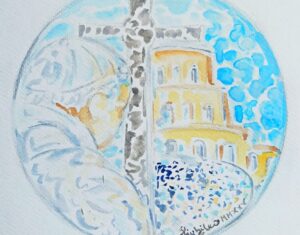
The artist Mauro Russo creates a work dedicated to the Jubilee 2025
A work for the Jubilee 2025. This initiative comes from the artist Mauro Russo Painter and serves as a good omen following Pope Francis’ discharge from the Gemelli Hospital, where he had been hospitalized since last February 14. It is a piece that aims to encapsulate a message of peace and hope, like a treasure chest of symbols and colors that lead to a universal image for believers. The work was executed in tempera on paper, measuring 25×27 cm. The profile of Pope Francis, bowed over his cross, offers his words of unity and brotherhood to the crowd at the foot of the Colosseum. The artist states: “With great enthusiasm, I conceived the idea of creating a piece for the Jubilee 2025. It was also an important opportunity to engage, through this painting, with the great masters of the past and the last century, who never missed the chance to leave their message in such events.” Mauro Russo, exclusively for GP MAGAZINE, ALCE NEWS, and GIUBILEO MAGAZINE, has shared the painting with us, and we are delighted to present this small-format work to our readers. Russo is now well known in elite artistic circles. The master has a deep connection with sacred art. We recall his great Crucifix, an oil painting on wood nearly two meters tall, which he donated to the Church of San Pantaleone in Limbadi, Calabria, his hometown. It is still preserved today in the chapel of the baptismal font.
Read More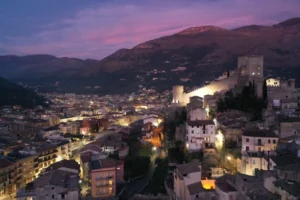
Jubilee: The first stop of the “Walks in the protected areas of Lazio” in Itri
The first significant stop of the project “Walking in the Protected Areas of Lazio – Jubilee 2025 Edition” kicks off in Itri. This initiative is promoted by the Regional Department of Environment and Tourism, led by Elena Palazzo, and the Department of Parks, headed by Giancarlo Righini. In collaboration with Cammini d’Italia, the project focuses on slow and sustainable tourism, aiming to showcase the many hidden treasures across Lazio. Throughout 2025, it will involve seven parks, one reserve, and eight historically and culturally significant walking routes. The first event is scheduled for February 22 in the historic village of Itri, where a free guided tour and a tasting of Natura in Campo-branded products have been organized. The regional councilor Elena Palazzo, a resident and former administrator of Itri, will be present at the starting point at 10:00 AM to greet visitors. At the end of the tour, participants will have the chance to learn about Itri’s renowned gastronomic excellence: the olives from which a prized oil is extracted, famous throughout Italy and highly sought after abroad. “A perfect opportunity to immerse oneself in the culture and flavors of the region,” explains Regional Councilor Elena Palazzo. “We are investing heavily in enhancing the natural areas that make Lazio so rich. These places reveal unexplored corners, breathtaking landscapes, and promote the development of slow and sustainable tourism. I am delighted that the project is starting in the southern Pontine area, which has so much to offer in this regard. Through the ‘Walking in the Protected Areas of Lazio’ initiative, we give everyone the opportunity to experience our stunning landscapes up close while also discovering Lazio’s enogastronomic excellence, which speaks volumes about our traditions and history—just like the famous Itri olives. This is the right way to promote our localities and support regional development.” The second event is set for Sunday, February 23, 2025, in the Monti Aurunci Natural Park. The walk will start from the Pornito Refuge in Maranola and lead to the summit of Monte Redentore, offering a spectacular view of the Gulf of Gaeta and the Pontine Islands. This walk will be dedicated to exploring the Cammino di San Filippo Neri. For more details on upcoming stops and to register, visit www.camminiditalia.org
Read More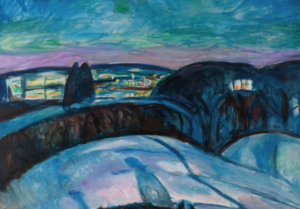
“Munch. The Inner Cry”: a major exhibition at Palazzo Bonaparte in Rome
From February 18 to June 2, 2025, Palazzo Bonaparte will host a major exhibition dedicated to Edvard Munch, one of the most important modern artists. Curated by Patricia G. Berman, one of the leading experts on Munch, the exhibition will feature 100 works by the artist, including some of his most famous pieces, such as The Scream, The Death of Marat, and Starry Night. The exhibition will focus on Munch’s life and work, exploring his human and artistic journey. Munch is known for his ability to express the deepest emotions of the human soul through his art. His works are often characterized by a sense of anguish and solitude, reflecting his personal experiences. The Palazzo Bonaparte exhibition will be a unique opportunity to get a closer look at Munch’s work and gain a deeper understanding of this great artist. Who Was Edvard Munch? Edvard Munch was a Norwegian painter, born in 1863 and passing away in 1944. He is considered a forerunner of Expressionism and one of the leading figures of Symbolism. His art was deeply influenced by his personal experiences, marked by loss and profound inner turmoil. Munch’s Works Munch’s works are known for their strong emotional impact. His paintings often depict isolated human figures set in unsettling landscapes. His use of color is intense and dramatic, contributing to an atmosphere of anguish and mystery. The Palazzo Bonaparte Exhibition The exhibition at Palazzo Bonaparte will feature a selection of 100 works by Munch, including paintings, lithographs, and prints. The displayed pieces will cover the entire span of the artist’s career, from his early Impressionist-influenced works to his later, more personal Expressionist style. Exhibition Information The exhibition Munch. The Inner Cry will take place at Palazzo Bonaparte, in Piazza Venezia, Rome, from February 18 to June 2, 2025. Tickets are already available for purchase on Ticket.it
Read More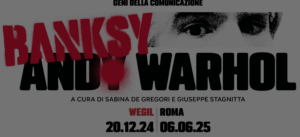
Warhol and Banksy on display until june 6 at WeGil in Rome
Kate Moss by Banksy face-to-face with Marilyn Monroe. Then, Queen Elizabeth, portrayed by Warhol with the royal diadem, side by side with her depiction as a monkey. Add to this a gallery of Mao, Lenin, and Kennedy by one, and Queen Victoria by the other. In other words, the world of Andy Warhol—the most photographed artist in the world, famous and omnipresent—contrasted with the anonymous Banksy, who has turned his art into a global media phenomenon. The two artists meet face-to-face in the exhibition “Warhol Banksy”, on display at WeGil in Rome from December 20 to June 6, 2025, which directly compares their creative journeys. This unique exhibition takes inspiration from a 2007 show curated by Banksy himself, where the enigmatic artist juxtaposed his works with those of the father of pop art. Sponsored by the Lazio Region in collaboration with LazioCrea and produced by MetaMorfosi Eventi and Emergence Festival, the exhibition documents the innovative and revolutionary paths of both artists. It features over 100 works sourced from renowned private collections worldwide and major art galleries. Behind the event lies an extensive research effort as well as significant logistical challenges. For instance, the walls brought over from London—featuring Banksy’s creations—alone weigh 800 kilograms. The exhibition reflects the contemporary approach to art, which is no longer confined to object-based pieces like traditional paintings, but has evolved into art as an event. This Dada-inspired approach creates disorientation and provocation. Warhol did this in the 1980s, primarily in the context of consumerism, while Banksy does it today with explicit references like his “Mona Lisa Smile” at the Louvre. 4o
Read More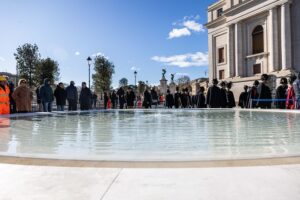
Piazza Pia: The new look for the Jubilee wins over romans and beyond
For centuries, Piazza Pia was an unresolved urban node—a dilemma that engaged Popes, designers, and city institutions in solving the challenge of access to St. Peter’s Basilica and its connection with the Bridge and Castel Sant’Angelo. Here are the milestones marking the transformations of this emblematic place, from its origins as an anonymous traffic hub to its completely renewed urban definition. During the Middle Ages, the area between Castel Sant’Angelo and Borgo was a square from which a porticoed road extended, cited in numerous documents from the 12th and 14th centuries but erased by subsequent changes in the urban fabric. The covered walkway provided pilgrims with shelter from the elements as they traveled to St. Peter’s Basilica. Major modifications began in the 15th century in anticipation of and in conjunction with Jubilees, events when Rome, then as now, embraced various urban adaptations to welcome throngs of pilgrims. For the Jubilee of 1450, Pope Nicholas V planned a redesign of the area, though it remained unfinished. Later, Pope Alexander VI ordered the first demolitions of some medieval Borgo buildings, including a pyramid-shaped mausoleum—twin to the Pyramid of Cestius—to make way for a new road that would become the main pilgrim access to the Basilica. Indulgences were even granted to those who participated in demolishing the Vatican Pyramid. The road, named Via Alessandrina after the pope who promoted it, was inaugurated for the Jubilee of 1500 and soon came to be known as Borgo Nuovo, contrasting with Borgo Vecchio, the other primary route to St. Peter’s. From the then Piazza Pia—then called Piazza Castello or Piazza di Borgo—three streets originated: the two leading through Borgo’s dense housing toward St. Peter’s and one toward Borgo Sant’Angelo. Between Borgo Vecchio and Borgo Nuovo lay the “Spina,” a block named for its elongated shape pointing toward the Tiber, with its base near St. Peter’s. The deep transformations of this area were chronicled in the 2016 Capitoline Museums exhibition “The Spina, from the Vatican Fields to Via della Conciliazione,” curated by Claudio Parisi Presicce and Laura Petacco, featuring diverse materials. By the 17th century, with Gian Lorenzo Bernini’s colonnade, St. Peter’s Square took its final form, but the connection between the Spina and the area corresponding to today’s Piazza Pia remained contentious. Pope Paul V made the first aesthetic improvements by decorating the Spina’s front with the Mascherone Fountain after bringing the Acqua Paola to the Vatican. Yet 17th-century maps depict the square as a modest widening, devoid of notable buildings, intersected by the road from Ponte Sant’Angelo and descending steeply toward the Tiber past the Santo Spirito Hospital. The area remained largely unchanged until 1852, when architect Luigi Poletti introduced two architectural facades on either side of the Spina’s tip. These twin facades, with travertine pilasters and capitals, clad the modest rear buildings, creating what Gianfranco Spagnesi called “one of the last urban Baroque-like scenes.” In 1875, the construction of embankments to contain the Tiber began, requiring demolitions along the riverbank, creating the Lungotevere, and drastically altering the city’s relationship with its river. This arrangement, too, was short-lived. In 1911, Ponte Vittorio Emanuele II was inaugurated near Borgo Santo Spirito. While road connections to Prati were still under design, Piazza Pia itself was reshaped to accommodate vehicular traffic. The Spina was obliterated in 1936 following the Lateran Pacts, giving way to the new Via della Conciliazione, a visual manifestation of the reconciliation between Church and State and the grand new access to St. Peter’s Square from Castel Sant’Angelo. Demolitions began at Piazza Pia, with Mussolini striking the first blow to the cornice of the elongated building marking the Spina’s tip. While the demolitions were completed in a year, reconstruction was slow, hampered by wartime financial strains. The layout, completed by 1950 for that year’s Jubilee, remained unchanged until 2023. Today, tourists, pilgrims, and locals can admire Piazza Pia’s new face, transformed in just a year and five months. It has become a vibrant space in the heart of Rome, steps away from the Vatican, the picturesque Tiber with its bridges, and the magnificent dome of St. Peter’s Basilica.
Read More
The story of the official bell of the Jubilee 2025
The Official Bell of the Jubilee 2025 was created by the Pontifical Marinelli Foundry of Agnone, in the province of Isernia. This historic foundry, one of the oldest in the world, crafted a bell weighing 200 kg, with a circumference of 2 meters, tuned to the musical note D. The bell features in relief the logo of the Jubilee 2025, accompanied by the motto “Peregrinantes In Spem” (Pilgrims in Hope). The logo depicts four stylized figures representing humanity from the four corners of the earth, united with one another, with the first figure embraced by a cross symbolizing Christ, extending to become an anchor of hope. The waves below are in motion, symbolizing that the pilgrimage of life does not always take place in calm waters. In addition to the logo, the bell features other decorative elements: Four stylized angels positioned at the four corners of the earth, holding back the four winds so that they do not blow on the earth, the sea, or any plant, inspired by the passage in Revelation 7. The number four symbolizes universality, and the four corners of the earth represent the whole world. An image of the Holy Father in the act of opening the Holy Door of St. Peter’s Basilica, a gesture that marks the beginning of the Holy Year. The Door remains open for the entire Jubilee year, allowing pilgrims to cross its threshold to obtain the indulgence associated with the Holy Year, demonstrating that their pilgrimage has led them to an encounter with Christ and that the Door is always open for all people of goodwill. The coat of arms of Vatican City (the Keys given by Christ to the apostle Peter) and the papal motto “Miserando Atque Eligendo” (“With love and choosing him”), taken from the Homilies of Saint Bede the Venerable. The casting of the bell took place on December 15, 2023, in Agnone, in the presence of Archbishop Rino Fisichella, Pro-Prefect of the Dicastery for Evangelization. The Pontifical Marinelli Foundry had previously crafted bells for earlier jubilees, including the majestic bell of the Jubilee 2000, which is now located in the Vatican Gardens. For collectors and interested faithful, miniature reproductions of the Jubilee 2025 Bell are available, faithfully replicating the original and made with high-quality materials. These reproductions can be purchased from various specialized retailers. The Jubilee 2025 Bell represents a symbol of faith, hope, and unity for pilgrims from around the world, accompanying the celebrations of the Holy Year with its solemn chimes.
Read More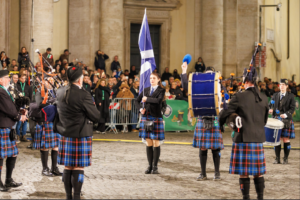
Rome Parade 2025: A spectacular success for the roman New Year
An unforgettable start to the year in the Eternal City, thanks to the Rome Parade, which enchanted the audience with an extraordinary procession of artists, musicians, and performers along a 4-kilometer route through some of Rome’s most iconic locations. Starting from the Pincio Terrace, the parade made its way through Via del Babuino, Piazza di Spagna, Via dei Condotti, Via del Corso, and Piazza del Popolo, attracting nearly 30,000 enthusiastic participants and spectators. This year’s edition showcased the energy and talent of numerous Italian groups alongside prestigious American high school marching bands, delivering unique moments of music, color, and entertainment. Adding to the festivities were captivating majorettes, dynamic cheerleaders, and unmistakable street performers, all guided by the charismatic hosting of Stefano Raucci, Francesca Ceci, and Stefano Molinari, who engaged the audience with professionalism and charm. The Rome Parade 2025 kicked off with a ribbon-cutting ceremony led by Svetlana Celli, President of the Capitoline Assembly, and was opened by the ancient Roman group AB VRBE CONDITA, followed by Renaissance-era reenactors. The procession featured the Hamilton High School Charger Marching Band, street performers from the Festive Spark Street Crew, the Corpo Bandistico Pontelliese, the Spaccanapoli folk group from Scafati, Disney-themed Cosplayers, the Varsity Spirit All American group, the Bedizzole Marching Band, the Sbandieratori e Musici di Marino – Lo Scudo di Lepanto, and the Detroit Catholic Central High School Marching Band. Other highlights included the Banda Musicale di Cave with the Majorettes Golden Stars Sabine of Casperia, Jolly Rickshaws with Cotton Candies supporters, the Holly High Steppers stilt walkers, the Associazione Filarmonica Vejanese, the Candy Lane Performers, a second performance by Varsity Spirit All American, the Bersaglieri A.N.B. “Cotterli” Fanfare of Aprilia, Led Robots – Galactic Gliders, the “G. Verdi” Band of Castel Chiodato, the Black Brass Band, the Heritage High School “Incomparable Marching Storm,” Brazilian dancers from the Carnival of Joy, the City of Rome Pipe Band, Superhero-themed Cosplayers, Pifferi e Tamburi di Baio Dora APS, the Banda Musicale “Città di Fiano Romano” with Orbassano Majorettes, the Noel Skywalkers stilt walkers, the Parkview Marching Band, and the folk group La Frustica of Faleria. Giant balloons, including the Rome Parade Balloon, Senator Balloon, Maria the Majorette, Trevor the Triangle, the Centurion, and the Gladiator, added vibrant color and excitement to the parade’s most spectacular moments. Lizzie Bone, representative of Destination Events, the organization behind the Rome Parade for over 15 years, expressed her delight, stating: “We are thrilled with this year’s success and the incredible participation, which included a growing number of Italian groups alongside our beloved American high school marching bands. Rome always welcomes us with unmatched warmth, and we can’t wait to return next year to share the enthusiasm, culture, and fun with even more participants. It is a great honor to offer this New Year’s gift to the city of Rome, making the first day of the year so festive and uplifting.” The event has firmly established itself as a must-see in Rome’s cultural landscape, uniting people of all ages in a message of joy and hope for the new year. Once again, it has demonstrated the power of music and performance to create an atmosphere of universal joy and togetherness. The parade was part of the ROMA CAPODARTE 2025: Cities in the World initiative, promoted by Roma Capitale, the Department of Culture, and coordinated by the Department of Cultural Activities.
Read More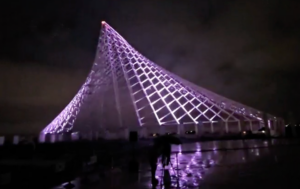
The Calatrava Sail lights up for the Jubilee
The Calatrava Sail, located in the Tor Vergata district of Rome and originally designed for the 2005 World Swimming Championships before being abandoned as an unfinished project, has recently captured the curiosity of onlookers as it illuminated with a spectacular new nighttime lighting display. The unique architecture of the Sail, conceived by Spanish architect Santiago Calatrava and recognizable from many kilometers away for its structure reminiscent of a “shark fin,” came alive with stunning multicolored light displays, creating a striking visual effect. These are technical lighting tests for the iconic structure, ahead of its official lighting on December 24 as part of the Italian State Property Agency’s contribution to Rome’s 2025 Jubilee. Abandoned for nearly 14 years and considered one of Rome’s largest unfinished projects, the Calatrava Sail will be made accessible again for the Jubilee thanks to safety and redevelopment work carried out by the State Property Agency. The area will be fully open and permeable, featuring an arena capable of hosting up to 12,000 visitors. The development plan for the area, coordinated with the Ministry of Economy and Finance and the Technical Table led by the President of the Region, with the participation of Rome’s Mayor and local institutions, includes the creation of a green city dedicated to well-being, research, and education. The project will utilize public-private partnerships to attract investments to the area. The site will be open to citizens, tourists, and pilgrims, with the surrounding area undergoing extensive reforestation. This marks the beginning of one of the most significant sustainable urban regeneration projects, returning green spaces and wellness infrastructure, research and education laboratories to the community, all to be realized through public-private partnerships.
Read More
Prepare for the best Jubilee 2025: How to optimize your accommodation business
The Jubilee 2025 represents a unique opportunity for Rome’s hospitality businesses, with a massive influx of pilgrims and tourists from around the world. To best prepare for this grand event, it is essential to carefully plan every detail of your business to offer guests an impeccable experience and efficiently manage the booking flow. Investing in additional services, optimizing digital management, and enhancing your online visibility will enable you to successfully handle the Jubilee. Enhance Your Guests’ Experience with Additional Services With the increase in international visitors, offering services that enrich your guests’ experience is a sure way to gain appreciation and grow your reputation. For example, free Wi-Fi access has become essential for many tourists, while an included breakfast can make a significant difference, especially for pilgrims who set off early in the morning. You could also consider personalized packages for families or groups, including, for example, private tours, discounts on local attractions, or transportation services. Another appreciated option is the possibility of online check-in, which offers greater convenience for guests and optimizes reception times. If you run a luxury or mid-range establishment, you might implement a digital concierge, a service that allows guests to access city information and local events anytime directly from their smartphones. Finally, for an exclusive touch, consider offering personalized cultural experiences. A walking tour of Rome’s historic center, tickets to religious events related to the Jubilee, or collaborations with certified tour guides are all proposals that enrich the stay and make it more memorable. Optimize Booking Management Managing bookings is a crucial aspect, especially during an event like the Jubilee, which will bring a sharp increase in demand. Avoiding scheduling errors such as overbooking or confusion with arrivals and departures is essential to maintaining a good reputation. Adopting booking management software will help you monitor all guest-related information in real time, from stay dates to individual preferences. In particular, Channel Management systems allow you to synchronize your property’s availability across various booking platforms (like Booking.com, Airbnb, Expedia, etc.), avoiding overlaps and optimizing space management. This will allow you to focus on other service aspects without risking mix-ups or double bookings. A Digital Marketing Strategy to Attract More Customers With increasing competition in the hospitality sector, adopting a targeted digital marketing strategy is crucial to gaining visibility during the Jubilee. Investing in Google Ads campaigns, SEO (search engine optimization), and social media will help you promote your business to an international audience. High-quality images and videos of your property are an excellent way to attract online attention. Ensure that your content reflects the value of the services offered and highlights comfort, cleanliness, and the availability of additional services. Also, remember to leverage social platforms to update guests on religious events related to the Jubilee or to propose special offers during the celebration. Efficient Communication Management with CRM Another tool that can make a difference in managing your property during the Jubilee is a CRM (Customer Relationship Management) system. This software allows you to centralize and automate guest communication management, improving service efficiency and creating a more personal connection. For instance, you can automatically send welcome emails, solicit post-stay reviews, and share information on special events or future promotions. The CRM can also be integrated with automation tools to respond quickly to messages on social media and the website, ensuring fast and efficient service. The Importance of Reviews for Building Reputation Online reviews are a critical factor in the decision to book a property, especially for international tourists. Therefore, it is important to carefully monitor reviews on major booking platforms. Promptly responding, thanking guests for positive comments, and constructively addressing complaints can strengthen your reputation and increase trust among future guests. Another useful tip is to incentivize the collection of reviews after a stay, perhaps by offering a discount on the next booking or other small benefits. An automation system integrated into the CRM can simplify this process, allowing you to send review requests in a targeted and timely manner. Turn the Jubilee into a Growth Opportunity The Jubilee 2025 is a great opportunity for your hospitality business, but only if you are ready to manage it strategically and efficiently. Investing in additional services, digitalization, and marketing will allow you to attract more customers and offer an unforgettable experience. If you’re unsure how to proceed or need support, we’re here to help you optimize your business management and make the most of this extraordinary occasion. Graziano Mancuso, Founder & CEO, Virpleo
Read More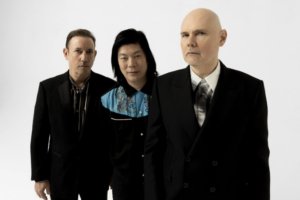
Rome: The Smashing Pumpkins on august 1st at the Capannelle Hippodrome
As part of Rock in Roma, the legendary band led by Billy Corgan, THE SMASHING PUMPKINS, will perform on August 1, 2025, at the Capannelle Hippodrome. They will play their greatest hits and present their latest album, “Aghori Mhori Mei”, released earlier this year. This is a unique opportunity to experience the electrifying energy and melancholic poetry of one of the most iconic bands in alternative rock. Tickets will be available starting Friday, December 20, 2024, at 10:00 AM on rockinroma.com, ticketone.it, and ticketmaster.it. Born in the early ’90s under the fiery leadership of the brilliant and charismatic Billy Corgan, the Pumpkins have defied labels, crossing genres and decades with a chameleon-like ability that few bands can match. From the distorted and dreamy sounds of masterpieces like “Siamese Dream” (1993) to the epic symphony of “Mellon Collie and the Infinite Sadness” (1995)—a double album that made music history—The Smashing Pumpkins have crafted a unique sonic universe: a captivating mix of grunge, shoegaze, heavy metal, psychedelia, and majestic orchestrations. “Bullet With Butterfly Wings,” “Tonight, Tonight,” “1979”—songs infused with rebellious energy and melancholic poetry that resonate with entire generations. Their music is more than just sound; it’s an emotional journey, a dive into the light and dark sides of the human soul, driven by Corgan’s unmistakable voice and thunderous guitars that rage like electric storms. In an era where rock seemed defined, the Pumpkins broke the mold, becoming symbols of innovation and introspection. Over thirty years later, their legend continues to grow, inspiring and mesmerizing audiences worldwide. Their concerts are pure sonic catharsis: immersive light and sound shows that transport spectators on a journey through their glorious past and an unwritten future. The Smashing Pumpkins are more than a band; they are a living legend.
Read More


